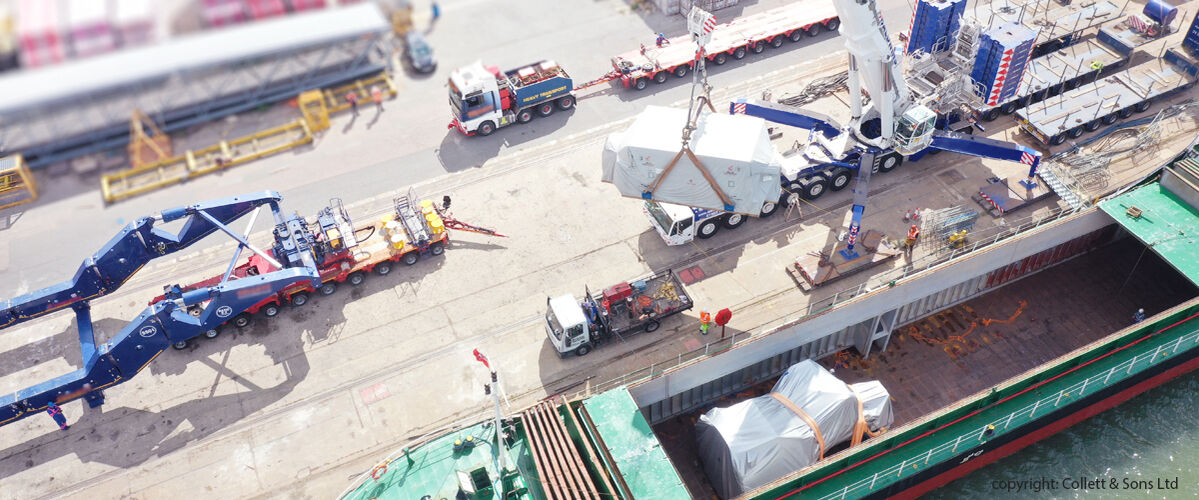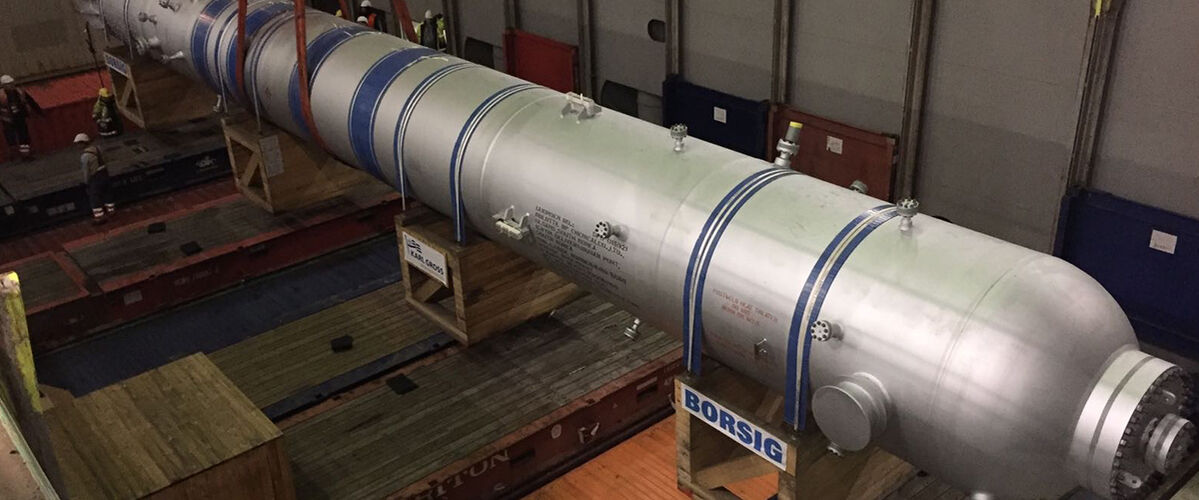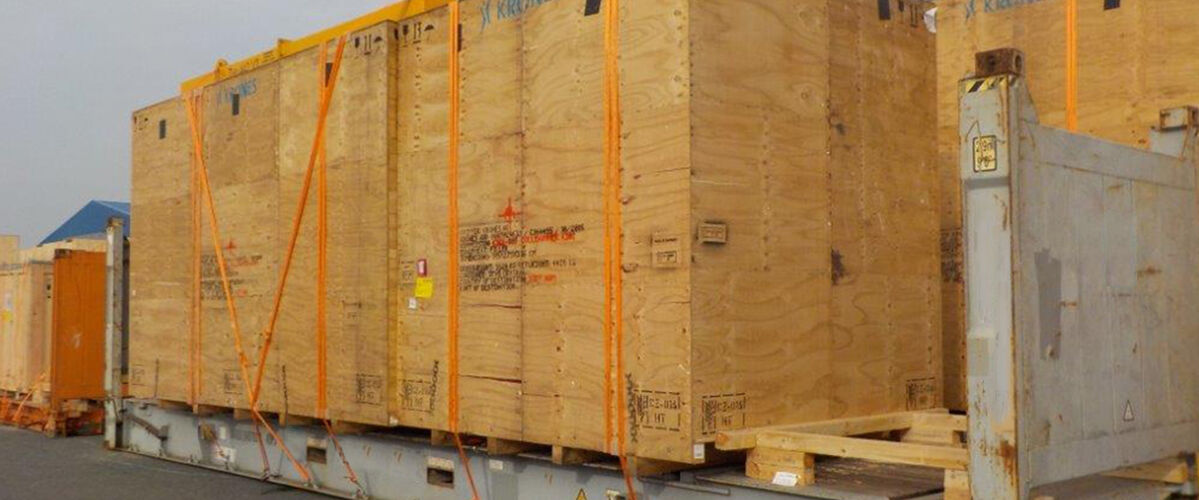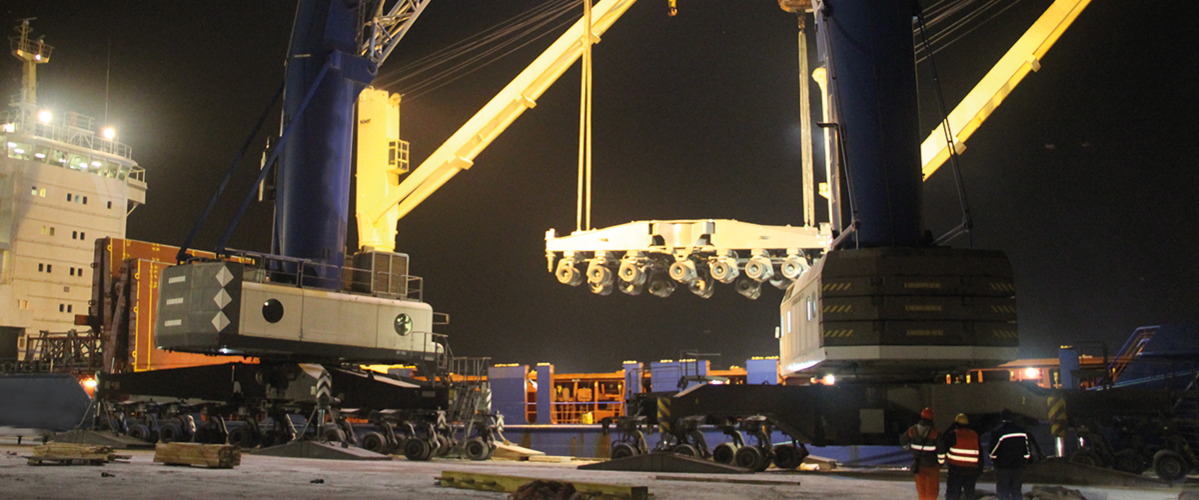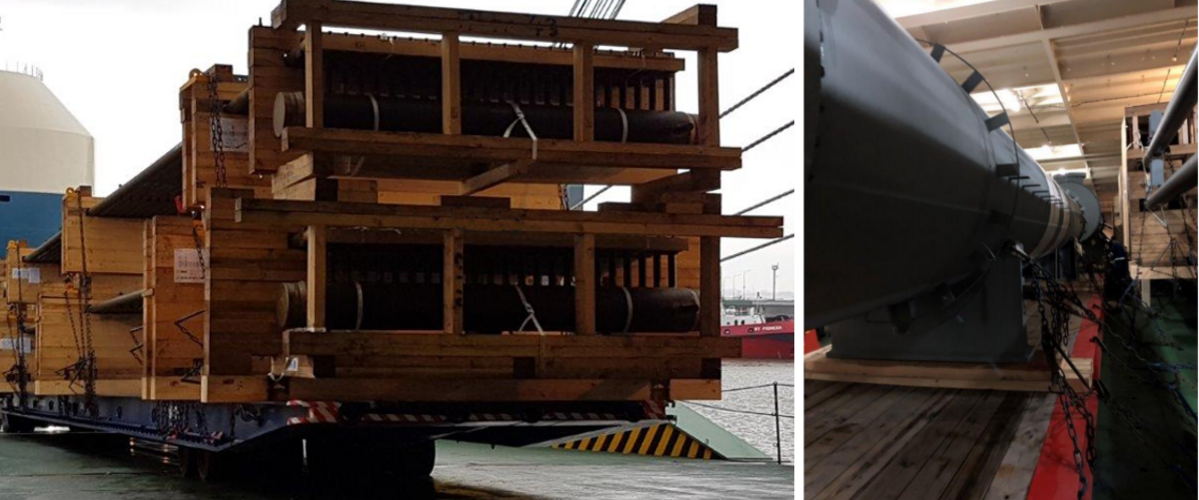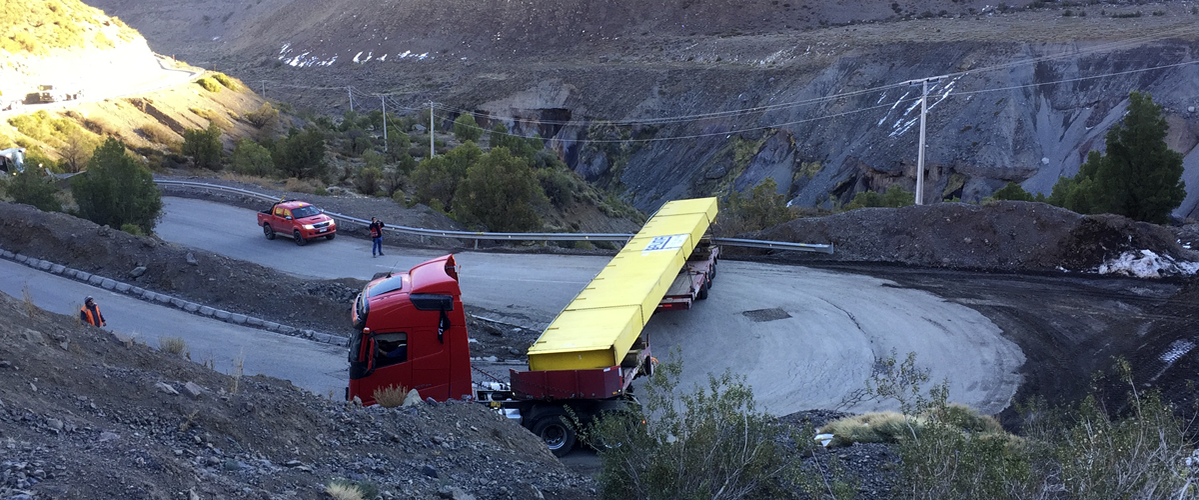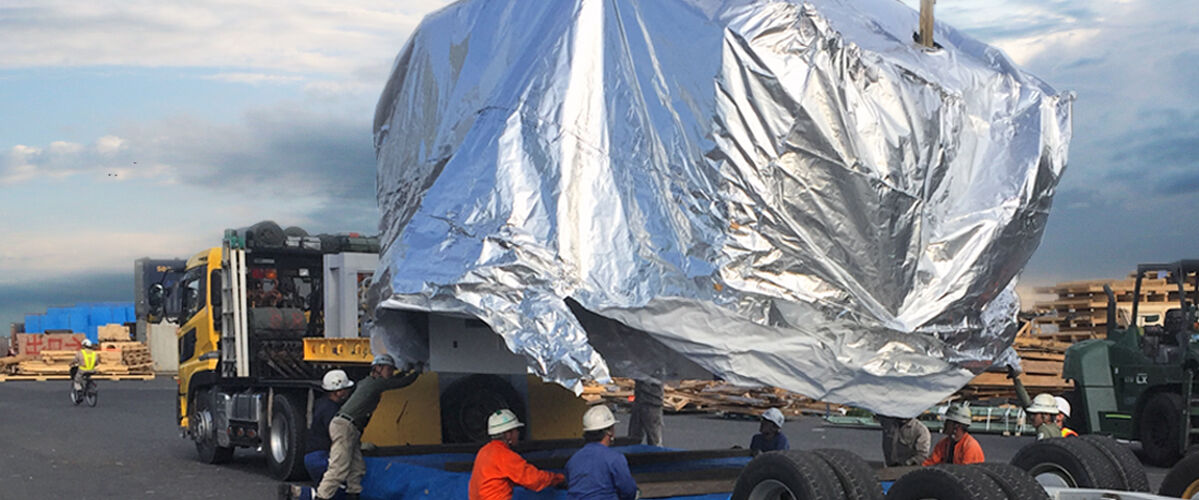Organizing heavy lift transports requires special know-how. This article showcases a project in which our specialists applied an efficient transport concept for two heavy lift pieces by bundling the pick-up of the two components from the manufacturer in two different countries. It illustrates which short-sea-shipping solution they created, how they organized the delivery to the construction site of the consignee and which measures they took to create an efficient and beneficial hand-over of the heavy lift cargo at the construction site.
Two heavy lift components – totaling almost 280 t
The two key components of this shipment were a turbine – piece weight 160 t, length almost 9 meters, width almost 5 meters – and a generator, piece weight almost 120 t, length almost 9 meters.
INFO:
When creating transport solutions for heavy lift cargo, it makes sense, to reduce the road haulage sections to a minimum. In a cross border transport this is even more true because performing feasibility studies, applying for transport permits and carrying out road transports, which in most cases need police escort, is comparatively time consuming and costly. The use of inland water vessels is an efficient and cost-saving alternative for transportation of largely oversize and/or overweight cargo.
Cost efficiency in the pre-carriage through “bundling the goods” and shipping across the river Elbe
In our project, one heavy lift piece came from the Czech Republic and the other one from Germany. For cost-efficiency, our colleagues had worked out a transport concept for the pre-carriage through which both pieces would cover the main part of the pre-carriage to the port of loading in Hamburg on the river Elbe. A solution, which required close attention to timing and the choice of a special inland vessel.
Key factor: draught
The Czech Elbe section only provides short time windows in which it carries enough water for transporting such high piece weights. As early as in the concept planning stage, it became clear: We have to choose an inland water vessel which is suitable for carrying the cargo’s weights and has low draught.
For the turbine’s way from the manufacturer’s plant to the next suitable inland port at the Czech Elbe our heavy-lift experts organized a heavy-lift road transport.
At the inland port, the turbine was trans-loaded via heavy lift port crane directly from the flatbed trailer onto the push barge.
As laid out in our transport concept, the push barge then sailed to the inland port Vahldorf in Germany via the Midland Canal. Parallel, our project team coordinated the transport of the 120 t generator from the manufacturer’s site to the inland port Vahldorf via heavy lift road haulage. For the trans-loading of the generator onto the push barge a 600 t mobile crane was used.
Solution for interim storage needed due to delays at the construction site
During the pre-carriage changes in the dates of the project schedule at the construction site occurred. These made it necessary to deliver the goods later than originally planned. Our team organized an interim storage solution for the heavy lift pieces in the port of Hamburg. For the unloading to the pier, they used a port crane from the terminal, specialized in project cargo handling.
In project cargo logistics adapting the transport to changes in plans or delays occurring at the construction site is necessary quite frequently. According to our experience, this is particularly true when delivering cargo for the new-building of factories. To reschedule and adjust the logistics processes to the requirements at the respective construction sites also while transports are already in progress, are, of course, part of our range of project cargo logistics services.
Short-sea-shipping via charter of a coaster
The destination of the goods was a new factory project in UK. For transportation across the North Sea we checked different scenarios and decided to ship via coaster in full-charter from Hamburg to a British “side-port”.
For loading the heavy lift components onto the sea vessel, we again used the terminal cranes of the heavy lift terminal in Hamburg. Actually, the good infrastructure for handling of heavy lift cargo added to our choice of making Hamburg the port of loading for this shipment.
Regarding the choice of the British port of destination, the proximity to the consignee’s construction site was a major criterion.
As the port of destination was lacking equipment for handling the heavy lift components, our team organized for a mobile crane for trans-loading the cargo directly from the coaster to a flatbed-trailer truck and a girder-bridge respectively.
A preliminary route study for the on-carriage from the port of destination to the consignee’s construction site had shown a time requirement of 2 days.
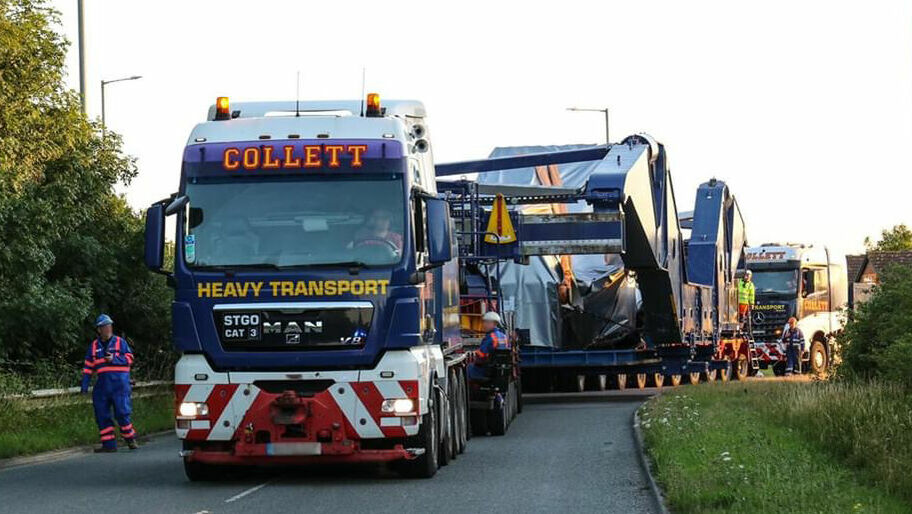
Efficiency through communication
Decisive for the delivery of goods on construction sites are not only the timing but also the transfer point of cargo. That is all the more important, if the goods are heavy. Our team coordinated the delivery point with the rigger – the entity, who places the pieces for installation – early on to find the best suitable place at the construction site.
The result:
We found not only a suitable place for handing over the cargo which was accessible for the heavy lift trucks, but also a costs saving solution for the transfer of the two heavy pieces. Instead of renting two cranes for the unloading, we had the heavy lift pieces lifted in the girder bridges, so that SPMTs could be placed underneath and the goods could be lowered onto them.


